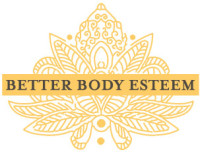
This is a guest post by Kristen Riordan (Schneider), grad intern, White Picket Fence Counseling Center.
When I was five years old, my dad married my stepmom. The entire week they were on their honeymoon, I was scared. I remember not being able to sleep. Why? I was worried they would go to the moon and get stuck there.
Yes, that’s right. In my young mind, I understood a honeymoon to be an event where you go to a moon covered in honey. I knew honey to be sticky, so naturally I was worried they’d get stuck there.
This sweet true story illustrates what we know to be true about anxiety. Anxiety is often caused by our imaginations, misunderstandings, and forecasts ungrounded in reality.
The story is funny, but anxiety is not. Anxiety causes a cascade of physiological effects, poor sleep, weakened immunity, and perhaps most importantly—anxiety causes us to miss what could be otherwise beautiful moments in our lives.
There are a myriad of ways to quell anxiety. Today we’ll focus on two tools: journaling and breath.
Journaling
Journaling is one way to bring our thoughts and fears to the surface. Oftentimes, the very act of writing our thoughts and fears allows us to release them. In addition, once our thoughts and fears are clearly laid out in front of us, we can begin to question them. The process of journaling helps us acknowledge, confront, explore, release, and understand our thoughts.
Here are a few examples of journal prompts:
- How do I feel right now?
- On a scale of 1-10, how anxious do I feel?
- When have I felt this way before?
- Where do I feel the anxiety in my body?
- How would I describe the feeling in my body?
- What coping skills do I have to handle this anxiety?
- What are three of my strengths?
- What may this anxiety be teaching me right now?
I’d encourage you to visit and revisit the experience of journaling as part of your daily self-care routine.
Breath
The next tool is breath. When we have anxious thoughts, our bodies respond by releasing a surge of stress hormones. These hormones are intended to keep us safe. For example, if my house catches fire, rightfully so, I feel anxious. My body immediately releases a flood of cortisol and adrenaline. These stress hormones support my capacity to flee the scene quickly and efficiently.
Now, let’s imagine that my house is not indeed on fire, but I am worried that my house might one day catch fire. My body responds to the perceived potential threat with the same flood of stress hormones. Only this time, I’m not quickly fleeing the scene. I’m sitting still. Worrying.
Because my body does not have a way to use the cortisol and adrenaline in a productive manner (there’s no actual fire to escape from), the stress hormones are now working against me.
Our minds and bodies are intrinsically connected; they’re constantly responding to one another. One way to slow the release of stress hormones is to breathe. As we continue to breathe intentionally, the body and the mind both return to calmer, more harmonious states.
The following breathing exercise can be used anytime you feel anxious in the mind-body:
- Sit comfortably
- Lengthen your spine and relax your shoulders
- Close your eyes
- Be aware that you are breathing
- Notice that you can breathe in and out through the nose
- Through the nose, take a deep breath in for the counts of 4-3-2-1
- Hold your breath for the counts of 4-3-2-1
- Through the nose, exhale the breath for the counts of 4-3-2-1
- Repeat this at least 3x
- Continue this breath for as long as you find it to be soothing
To my knowledge and in my experience, stress is not optional. It seems to be a natural part of life. Suffering with anxiety, however, is not mandatory. I hope these tools help soothe the big and little stressors in your life, and maybe even help alleviate any anxiety associated with your version of a “sticky moon.”
